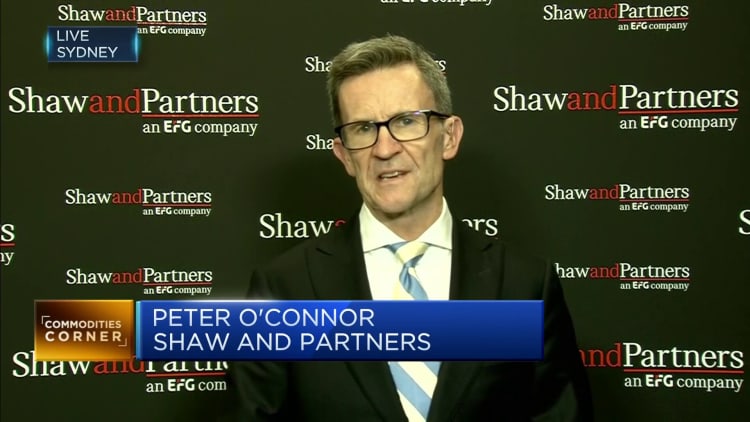BHP Group on Tuesday joined rival Rio Tinto in warning that a tight labor market, supply-chain snags, and inflationary pressures would continue through fiscal 2023, and reported a fourth-quarter iron ore output that missed estimates.
Global miners have been struggling to overcome Covid-19-related labor shortages and soaring production costs as iron ore prices come off their 2021 highs on rising recession risks and cooling demand in top consumer China.
Last week, Rio blamed a tight labor market and rising inflation while reporting misses across the board in its second-quarter production update, which dragged its shares by nearly 3%.
On Tuesday, BHP, the world's largest miner by market value, said iron ore output from Western Australia was 71.7 million tons in the three months to June 30, falling short of a consensus estimate of 76 million, and the 72.8 million it reported a year ago.

"Over the year ahead, the continuing conflict in the Ukraine, the unfolding energy crisis in Europe and policy tightening globally is expected to result in an overall slowing of global growth," BHP Chief Executive Officer Mike Henry said.
Henry added, however, that China is expected to contribute positively to growth as stimulus policies take effect.
The miner also lifted its output guidance for iron ore slightly for the current year. The midpoint of BHP's forecast for 2023 iron ore production for the region, of between 278 million and 290 million tons, was marginally higher than the 282.8 million tons it produced this year.
BHP's annual output met its projection of between 278 million and 288 million tons in a year that saw the firm complete a merger of its petroleum business with Woodside Energy Group and move away from polluting fossil fuels.
"In what was a fairly monumental year for BHP with the successful unification and Petroleum spin out, today's result will take the shine off of this to an extent heading into its FY results...," RBC Capital Markets analysts Tyler Broda said in a note.

"The share price reaction may be exacerbated by BHP's strong relative performance thus far in the sector downturn," Broda added. BHP shares jumped 2.4% in early trading but later declined to only 0.4% higher. That was in line with a 0.2% rise in the ASX 300 metals as iron ore prices in China crossed $100 per ton after Asia's largest economy sought to ease concerns in its trouble-ridden property sector.
Royalties impact
BHP said its metallurgical coal production in Queensland dropped by about 9% in the quarter, partly hit by an increase in coal royalties by the local government.
Last month, after a 10-year hiatus, the Queensland government announced an increase in royalties from coal production to capture windfall profit from rocketing coal prices.
"The near tripling of top end royalties has worsened what was already one of the world's highest coal royalty regimes, threatening investment and jobs in the state," Henry said.
The drop in production also followed the completion of the sale of 80% of its stake in the BHP Mitsui coal joint venture, its leading coal producing avenue in Queensland, to Stanmore Resources in May.
BHP said in the quarterly report that its $5.7 billion Jansen potash project in Canada was going according to plan and hoped to start first production in 2026.
The company has said that the fundamentals for potash were reinforced by supply-side disruptions linked to the war in Ukraine, whose neighbors Russia and Belarus account for almost 40% of global production.

